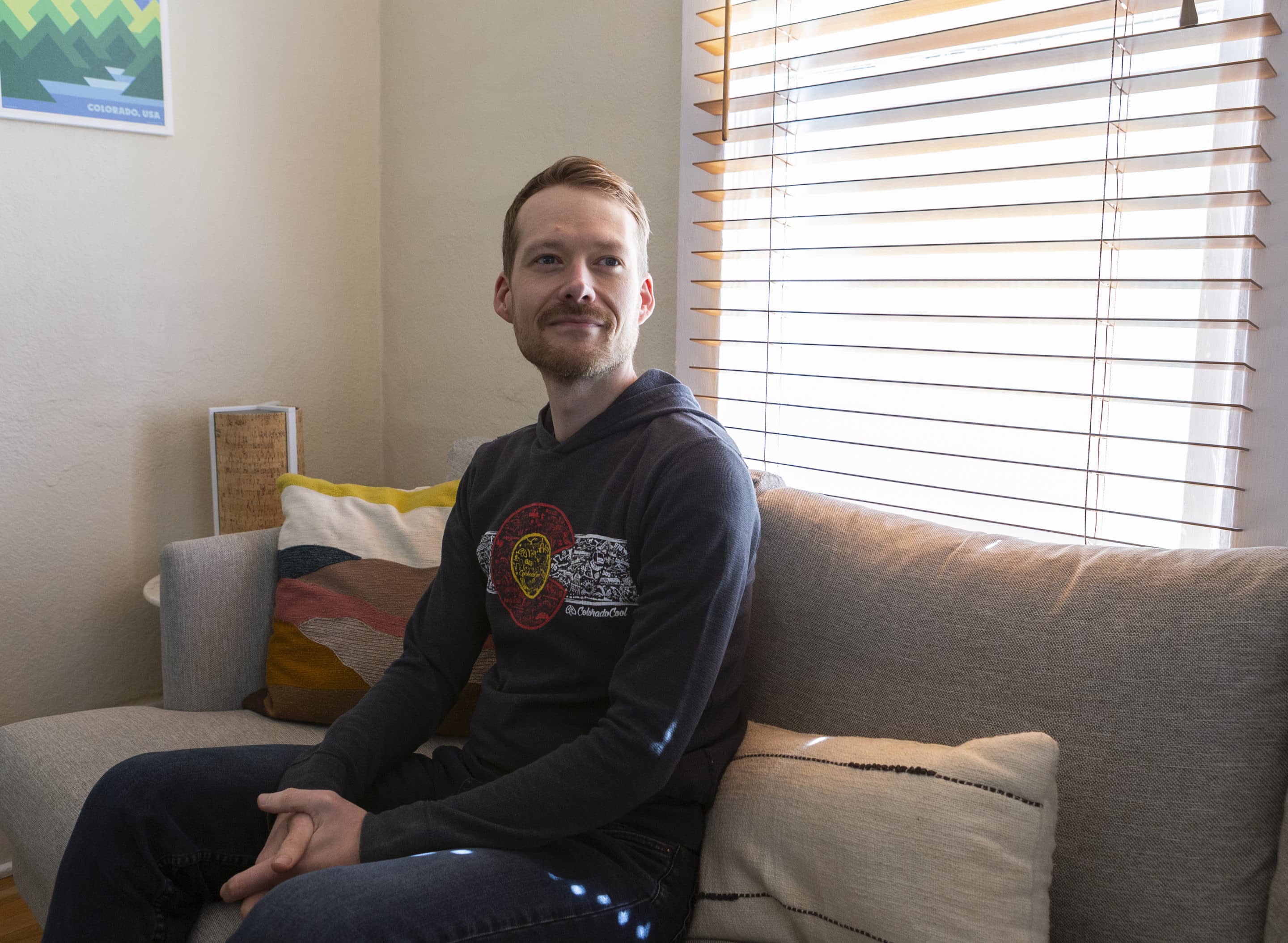//Illustration by Madison Lauterbach | [email protected]
Kelly Sammis thinks that sometimes we remain feeling broken because we don’t know things can be different.
Ten years after surviving a sexual assault in college, Sammis says her pelvis was speaking to her. Sharp muscle spasms and discomfort during intercourse, on top of increased stress and anxiety, consumed her. Unable to identify the source, the Parker-based physical therapist went down a winding journey that led her to not only heal her pelvic floor but to become certified as a pelvic health specialist. She pledges to help other people with vaginas like herself better understand their bodies.
“I didn’t ever go to therapy after, I thought I was fine,” Sammis said of her assault. “It wasn’t until I went to see one of my colleagues, another pelvic [physical therapist], and did mental health counseling to process the sexual trauma, that it went away. It was really interesting because my body just held onto that trauma and it didn’t show itself until years later.”
The pelvis is the center of gravity for people with vaginas; the pelvic floor is a line of muscles that stretch between the pubic bone and the tailbone. Like an intimate partner, it offers stability and support. Referred to as the emotional organ, the pelvic floor is an energetic container that when ignored, can result in infections, inflammation and other serious injuries due to restricted tissue. Rape and domestic violence cases have a strong correlation to pelvic floor dysfunction in those with vaginas, yet often go untreated due to lack of education and stigmatization surrounding the body part. In a research sample presented by the Journal of Sexual Medicine, 23% of patients with vaginas in the pelvic floor center reported a history of sexual abuse.
“My pain started to lessen pretty darn quick because most of it was just understanding what it was,” Sammis said. “I think that is a big piece of the puzzle for a lot of our clients. They don’t understand what’s going on, or they’ve been told during an exam, ‘Everything looks fine, I don’t know why, maybe it’s in your head.’ You get told all of these things that are pretty detrimental for progress and your care.”
The misunderstanding of uterine and vaginal pain is a historical phenomenon. In fact, the word “hysteria” originates from the Greek word for uterus.
“There’s still this pervasive belief in the medical community that anytime a woman complains about her health, it’s either related to her hormones or all in her head,” Doctor of Obstetrics and Gynecology Stephanie McNally said in an interview with Northwell Health.
McNally explains that “female hysteria” was once a common medical diagnosis for people with vaginas, applied when emotions such as anxiety, anger and even sexual desire were displayed. For centuries, it was believed that the uterus caused “hysterical” symptoms.
We see consequences from this stigmatization of bodies with vaginas today. Forty percent of people with vaginas who suffer from chronic pelvic pain have been told they exaggerate their pain, according to a survey by the Endometriosis Association.
Sammis understands this firsthand. When she finally sat down with someone who was well-versed in how pelvic floor dysfunction presents itself, especially in relation to sexual trauma, her healing became twofold.
“It is game-changing,” she said. “Being educated and being aware of how my body was holding and actually having a reason—understanding the reason behind the pain was powerful, to where I started seeing progress within the first few weeks of physical therapy. When I added in the mental health side, I had pain-free intercourse within two months.”
Sydney Zwicker, a Denver-based massage and pelvic care specialist, takes a different approach to achieve the same goal of empowering people in their own healthcare. Her practice blends what she calls “woo-woo,” including energy work, with physiology. As a survivor of teen sexual assault, she attributes trauma-informed holistic pelvic care to healing her body.
According to a study by The American College of Obstetricians and Gynecologists, there is a significant association between teen sexual victimization and later chronic pelvic pain.
“You can’t really separate the story from this part of the body, from the pelvis, because so much of how we hold onto those stories happens here in our roots,” Zwicker said.
She advises that shame not only has to be released on a personal level but societally, to make this therapy available to more people.
To allow the nervous system to fully unwind, both Sammis and Zwicker agree a combination of pelvic floor physical therapy and mental health support is essential. And of course, retraining the art of relaxation.
Author Naomi Wolf echoes this sentiment in her book, “Vagina.” Through scientific discovery and cultural analysis, Wolf uncovers how essential relaxation is to a person with a vagina’s sensuality and bodily function. Aware of the tension housed in the pelvic floor due to trauma, she denotes rape not just as a form of forced sex, but as an injury to the brain and body.
Many people with a vagina will type in “pelvic floor dysfunction” or “pain with sex” to the internet in search of help and, according to Sammis, will be met with complete garbage.
“You look at these women-centered magazines and they’re telling you to just do your Kegels, you’ll be fine,” she said. “It’s really not about that. It’s about finding a healthy balance between a shortening contraction and a lengthening contraction to have a good baseline in your pelvic floor.”
She has seen many mainstream outlets like Cosmopolitan tell women to contract the pelvic floor more by doing kegels, an exercise that is disguised as “strengthening” it. However, if you take a muscle that’s too tight already, and read to tighten it further, complications ensue.
New in the spotlight to women’s health are yoni eggs. Named for the Sanskrit word “yoni,” meaning womb or vagina, yoni eggs are stones that can be inserted into the vaginal opening. Many wellness practitioners praise the weighted crystals for strengthening the pelvic floor and soothing their sexual trauma. Others believe the prolonged contraction from using a yoni egg is counterintuitive to relaxing the already tense muscle.
While such experiences should not be ignored, many medical professionals denounce the practice not only for its empty promises but harmful side effects. There is currently no scientific evidence that discloses any benefits from using a yoni egg.
Yet, Zwicker personally attributes the reclamation of her pelvic floor to yoni eggs, announcing her sexuality has never felt safer since introducing the practice. She says the tool acts as a massager to the tissues, allowing for more blood flow, circulation and sensation.
She hosts yoni egg workshops to share the practice, and while she explains they are not for everyone, she believes it will help someone like herself who is healing from similar trauma to the pelvic bowl.
“One of the big things I’ve seen in the women’s health industry is that it doesn’t really advocate for the female body,” Zwicker says. She later adds, “So much of what I do feels like normalizing the female lived experience.”
Zwicker describes it as her soul’s work to reach people with vaginas who are feeling unsupported in their healing journey, and whether they work with her or another specialist, to know there are resources out there and that their pain is valid.
“Whether it’s through sexual trauma or postpartum trauma, or anything else where you have shame around what this part of your body looks like or feels like or emotionally holds, know that you’re not broken, and everything can heal,” she said.
Enjoyed this story? Help us keep the lights on! Supporting local press ensures the stories you want to read keep coming, become a member for free today! Click here.





How was molested as a kid until I turned 14
Tiffany, I am so sorry. I was until I was 5-9 years old.
Tiffany,
I’m so sorry you went through that. It was a grave injustice. You didn’t deserve that. I hope you’ve found some healing.
Patricia